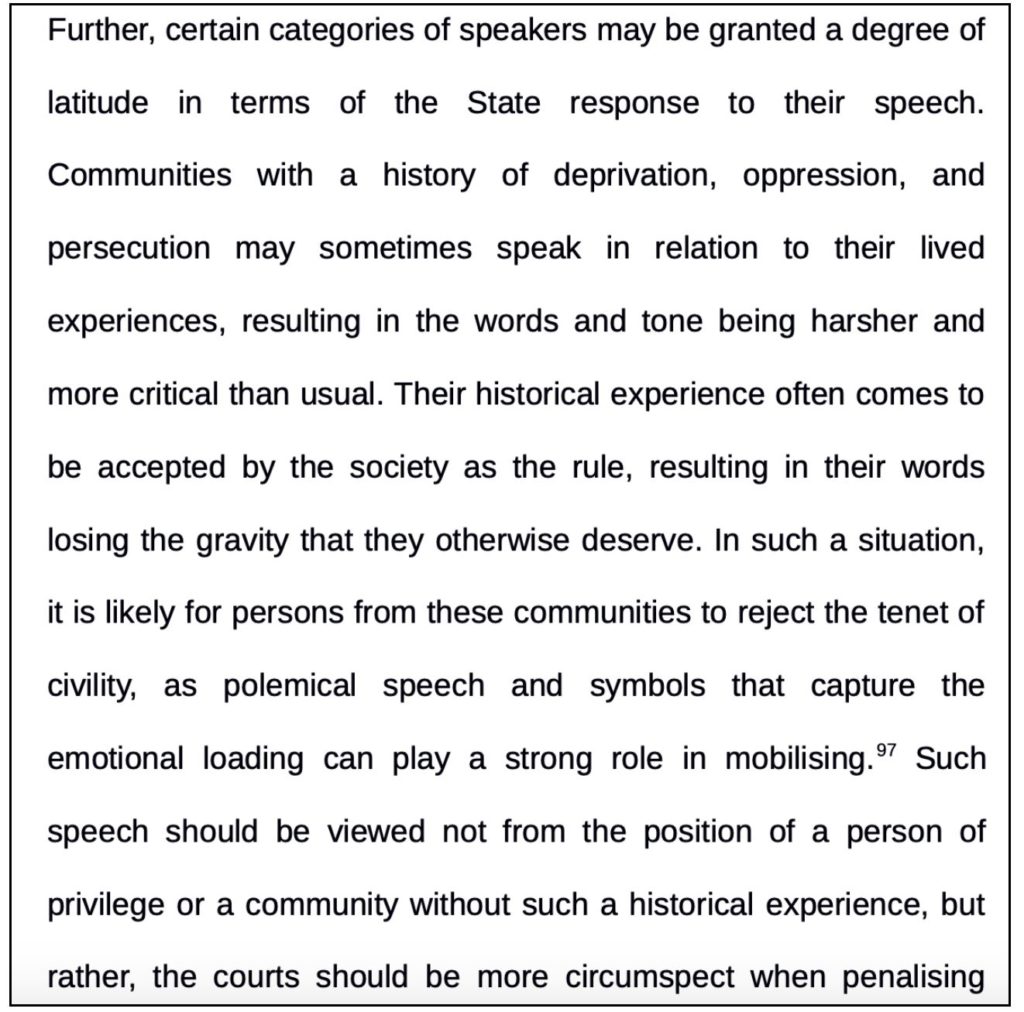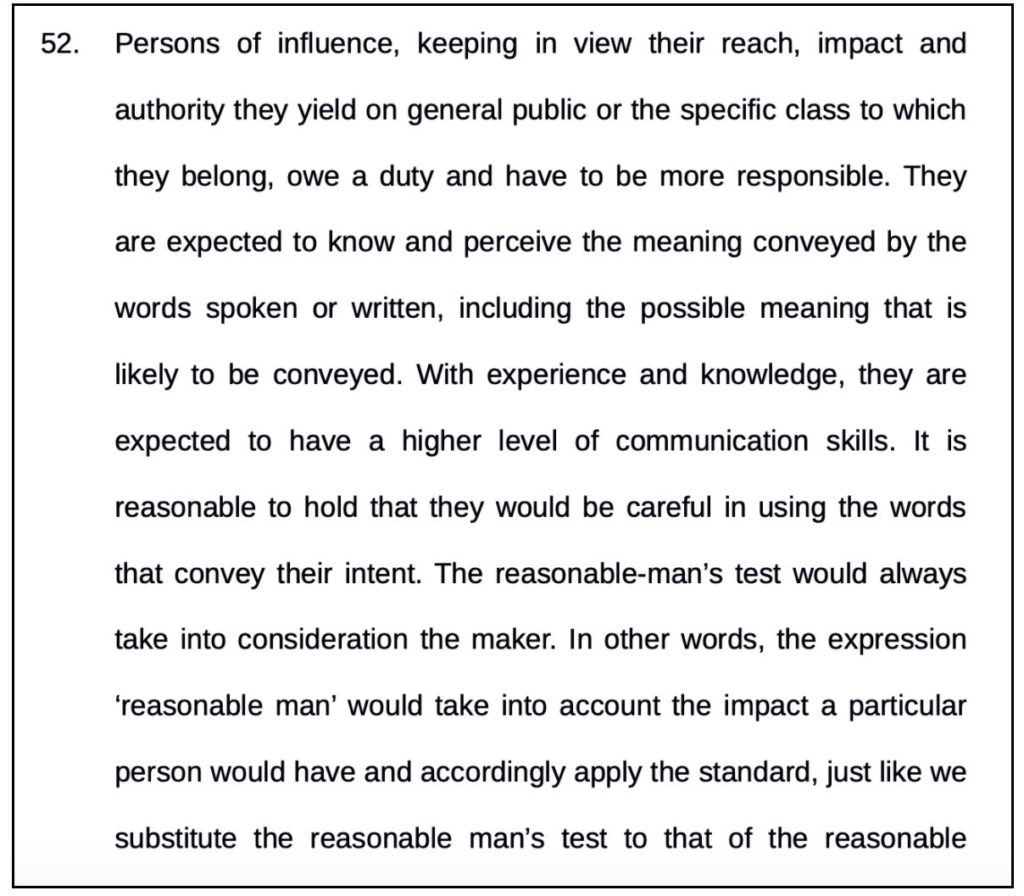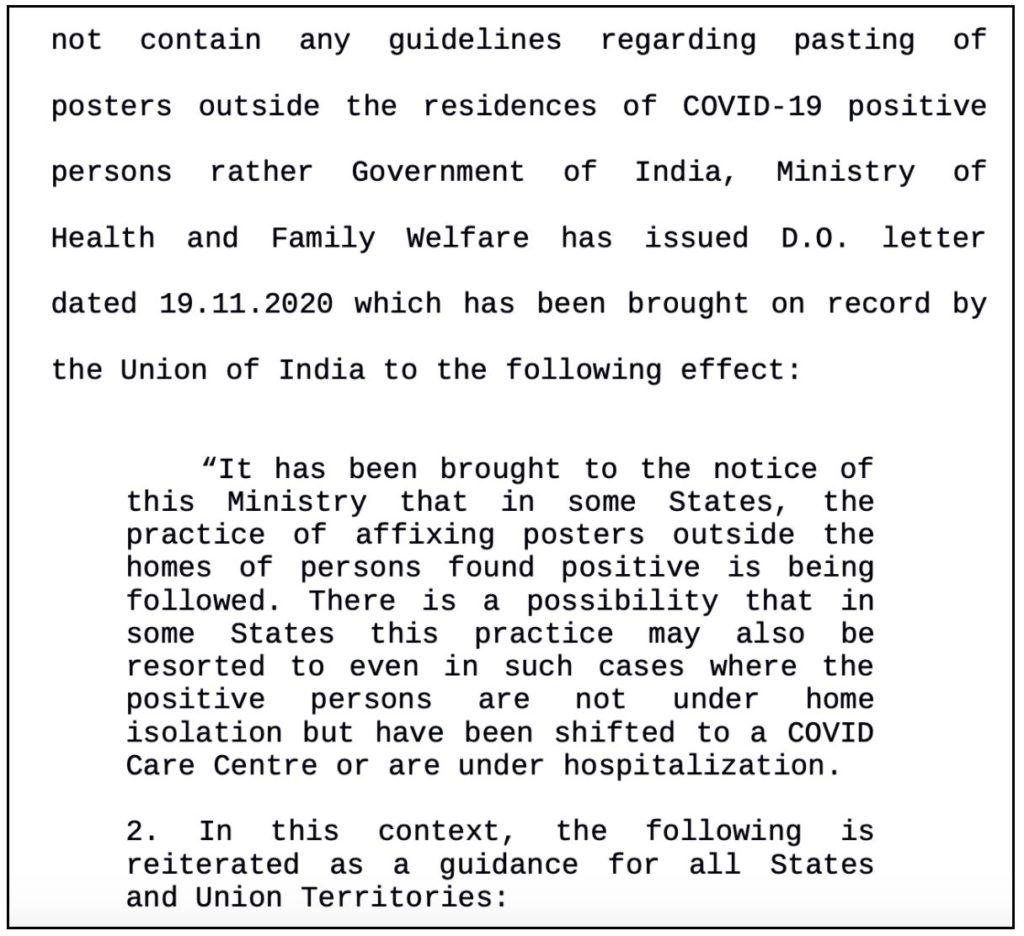In this edition of the roundup of important court judgments, we look at the case of Journalist Amish Devgan where the Supreme Court made important observations regarding hate speech. We also look at the order regarding mandatory CCTV installation in all police stations & places of investigation.
Let’s take a look at few of the significant court judgements and their larger implications.
Amish Devgan case and it’s implication for hate speech
The recent case of Amish Devgan vs. Union of India and others (2020) has generated discussion and controversy around the concept of hate speech. On 15 June 2020, while hosting a debate on his show ‘Aar Par’ (channel News18 India) regarding the Place of Worship Special Provision Act, the news anchor Amish Devgan called Khwaja Moinuddin Chisthi, better known as Khwaja Ghreeb Nawaz, an ‘attacker’ and ‘lootera’. Following this, several FIRs were registered against the anchor across the country.
The Supreme Court of India on 07 December 2020, refused to quash FIRs registered against Journalist Amish Devgan for his remarks against Sufi Saint Moinnuddin Chisthi. The several FIRs invoked sections 295A (Deliberate and malicious acts, intended to outrage religious feelings of any class by insulting its religion or religious beliefs), 153A (Promoting enmity between different groups on grounds of religion, race, place of birth, residence, language, etc, and doing acts prejudicial to maintenance of harmony), 505 (Statements conducing to public mischief) and 34 (Acts done by several persons in furtherance of common intention) of the Indian Penal Code. (IPC).
The apex court observed that the issue whether the offence was committed can be determined only on a factual evaluation in a trial. The judgment delivered by a bench of Justices A M Khanwilkar and Sanjay Khanna discusses the distinctions between ‘hate speech’ and ‘free speech’, the need to criminalize ‘hate speech’ and the tests to identify it.
“In this context, it is necessary to draw a distinction between ‘free speech’ which includes the right to comment, favour or criticise government policies and ‘hate speech’ creating or spreading hatred against a targeted community or group. The former is primarily concerned with political, social and economic issues and policy matters, the latter would not primarily focus on the subject matter but on the substance of the message which is to cause humiliation and alienation of the targeted group”, the judgment observed.

The following are the important points mentioned in the judgment.
The Court opined that the object of criminalising hate speech is to protect the dignity of an individual and to ensure political and social equality between different identities and groups regardless of caste, creed, religion, sex, gender identity, sexual orientation, linguistic preference etc. The judgement that “Loss of dignity and self-worth of the targeted group members contributes to disharmony amongst observes groups, erodes tolerance and open-mindedness which are a must for multi-cultural society committed to the idea of equality. It affects an individual as a member of a group”.
The court emphasised that the acts that promote divisiveness, alienation and schematism impinge on diversity and pluralism, and “when they are with the objective and intent to cause public disorder or to demean dignity of the targeted groups, they have to be dealt as per law”.
The judgement referred to article, essays, and jurisprudence from European Convention on Human Rights, USA, Germany, and Australia.
The judgement outlines that both context and content of the speech are important in determining whether it will amount to hate speech. ‘Content’ has more to do with the expression, language and message which should be to vilify, demean and incite psychosocial hatred or physical violence against the targeted group, the judgment observed. The ‘context’ has a certain key variable, namely, ‘who’ and ‘what’ is involved and ‘where’ and the ‘occasion, time and under what circumstances’ the case arises.
The judgment recognizes a distinction between the speech advocated by dominant groups and the groups which are victims of historical oppression. The judgement observed that, “Communities with a history of deprivation, oppression, and persecution may sometimes speak in relation to their lived experiences, resulting in the words and tone being harsher and more critical than usual. It is likely for persons from these communities to reject the tenet of civility, as polemical speech and symbols that capture the emotional loading can play a strong role in mobilising. Such speech should be viewed not from the position of a person of privilege or a community without such a historical experience, but rather, the courts should be more circumspect when penalising such speech. This is recognition of the denial of dignity in the past, and the effort should be reconciliatory”.

The judgment also observed that statements by persons holding power and influence have to be analysed in distinction from those made by an ordinary person on the streets. “Persons of influence, keeping in view their reach, impact and authority they yield on general public or the specific class to which they belong, owe a duty and have to be more responsible. They are expected to know and perceive the meaning conveyed by the words spoken or written, including the possible meaning that is likely to be conveyed. It is reasonable to hold that they would be careful in using the words that convey their intent”.

The judgement also mentions that the law of ‘hate speech’ recognises that all speakers are entitled to ‘good faith’ and ‘(no)-legitimate purpose’ protection. It reads, “The important requirement of ‘good faith’ is that the person must exercise prudence, caution and diligence. It requires due care to avoid or minimise consequence. ‘Good faith’ or ‘no-legitimate purpose’ exceptions would apply with greater rigour to protect any genuine academic, artistic, religious or scientific purpose, or for that matter any purpose that is in public interest, or publication of a fair and accurate report of any event or matter of public interest.”
Hate speech has not been defined in any law in India. However, legal provisions in certain legislations prohibit select forms of speech as an exception to freedom of speech. The matter was referred to the Law Commission to examine if it deems proper to define hate speech and make recommendations to the Parliament.
In this regard, the 267th Report of the Law Commission titled ‘Hate Speech’ made several recommendation to curb the menace of hate speeches. It concluded that new provisions in IPC are required to be incorporated to address the issues elaborately.
There is no general legal definition of hate speech. For that matter, the observations made in the Amish Devgan case outline important aspects for recognising and pursuing action against hate speech.
Paramvir Singh case and its implications for human rights
The Supreme Court judgement in Paramvir Singh Saini vs. Baljit Singh & Others (2020) orders installation of CCTV cameras with reasonable resolution, audio and video recording features in all police stations and investigation agencies like Central Bureau of Investigation (CBI), National Investigation Agency (NIA), Enforcement Directorate (ED), Narcotics Control Bureau (NCB), Department of Revenue Intelligence (DRI), Serious Fraud Investigation Office (SFIO), etc.
A bench led by Justice R.F. Nariman, K.M. Joseph, and Aniruddha Bose emphasises that it is imperative to ensure CCTV cameras are installed in all working areas of the investigation agencies like entry and exit points, holding cells, areas outside the cells, corridors, inspection rooms, outside washrooms, in front and behind the police stations, etc.
The CCTV installed must be equipped with night vision and clear image resolution along with audio and video features. It will be the duty of States governments and Union Territories to ensure the installation and proper functioning of CCTVs in areas where there is a lack of internet or electricity. The responsibility of proper working, maintenance and recording of CCTVs will be with the Station House Officer (SHO) of police stations. The judgement also directs that the State Level Oversight Committee (SLOC) and the Central Oversight Body (COB) to give directions to all police stations and investigative agencies to prominently display information about the coverage of the concerned premises by CCTV with large posters written in English, Hindi and vernacular languages. It also seeks compliance reports from central and state/UT governments for the same within six months giving a firm action plan with exact timelines. The State and UT governments are to allocate adequate funds for this purpose at the earliest.
The bench also directs that the posters are also to mention a person’s right to complain about human rights violations to the State or National Human Rights Commission, courts or Superintendent of Police or any other empowered authority. The post is also to mention that a victim has a right to secure the CCTV footage in the event of any human rights violation and that the CCTV footage would be saved for a certain minimum period, which would not be less than six months.
In this 12-page order, the bench takes note of several past cases where it had ordered installation of CCTV cameras in all police stations in order to check human rights abuses. However, the judgement highlights that the Compliance Affidavits and Action Taken Reports were filed by only 14 states and majority of them failed to disclose the crucial details.
The affidavits are bereft of details with respect to the total number of Police Stations functioning in the respective State and Union Territory; total number of CCTV cameras installed in each and every Police Station; the positioning of the CCTV cameras already installed; working condition of the CCTV cameras; whether the CCTV cameras have a recording facility.
The judgement carries significant implications for human rights of persons in custody as it outlines important aspects that have been missing in implementation before.
A PIL challenging the practise of affixing posters outside COVID-19 patients
The apex court reserved judgement on a Public Interest Litigation (PIL), filed by advocate Kush Kalra, seeking to challenge the practise of putting up posters outside the houses of COVID-19 patients who are in isolation as a mark of identification as per the executive orders of various state governments. The PIL challenges the practise, opining that such disclosures of identity of patients is a gross violation of their fundamental right to privacy.
The PIL asserts that the Constitution does not permit any form of discrimination on the grounds of illness and physical suffering. Putting up posters and circulating the names of COVID-19 patients to housing societies and resident welfare association makes them subject to public scrutiny, which goes against the ethos of living with dignity.
The bench of Justice Ashok Bhushan, BR Gavai and MR Shah asked the Solicitor General to whether an advisory can be issued in this regard by the centre so that a State is dissuaded from affixing posters outside the homes of COVID-19 positive patients.
On 01 December 2020, the Supreme Court observed that the practice of affixing posters outside the homes of COVID-19 positive patients creates stigma and can lead to a situation where these patients are treated as so called ‘untouchables’. However, on 03 December 2020, the apex court decided to reserve judgement on this public suit against the decisions of States and Union Territories and has now asked the Solicitor General to consider an advisory for the same. The court also noted that since a letter to this effect (not to paste posters outside the homes of COVID-19 patients) has already been issued by the Government of India, there was no need for any fresh directions in this regard.

A criminal case of Tabligi Jamaat attendee
In the Mohd. Saad v. State of UP and ors case, the Allahabad High Court on 02 December 2020, issued a stay on further criminal proceedings under Sections 307 (attempt to murder) and 270 (malignant act likely to spread infection of disease dangerous to life) of the IPC against a Tablighi Jamaat congregation attendee.
The Bench of Justice Ajay Bhanot asserted that charging a person who had participated in the Tablighi Jamaat convention at New Delhi with the offence of attempt to murder under the Indian Penal Code (IPC) prima facie reflected an abuse of the power of law.
“From a perusal of the material, charge sheeting the applicant under Section 307 IPC prima facie reflects abuse of the power of law,” the court observed.
It was alleged that the accused had concealed their visit to Tabligi Jamaat congregation in Delhi and deliberately indulged in negligent and condemnable acts, fully aware that COVID-19 pandemic had been declared and returned without informing the administration about their arrival or going into voluntary quarantine or taking a medical examination.
The Counsel for the applicant Mohd. Saad contended that though the original charge sheet was drawn up under Section 269, 270 IPC and even presented to the court, however, the same was recalled and a fresh charge sheet was submitted under Section 307 IPC. In regard to this, Justice Ajay Bhanot directed the concerned Senior Superintendent of Police (SSP) and Circle Officer (CO) to file a personal affidavit in the matter to explain how the offence of attempt to murder has been attracted in this case. The order reads, “C.O. shall also file his personal affidavit indicating as to how the ingredients of Section 307 IPC are made out from the facts in the record from the material collected during the investigation and justify the amendment directed by him to the charge sheet”.
Featured Image: Supreme Court on Hate Speech


